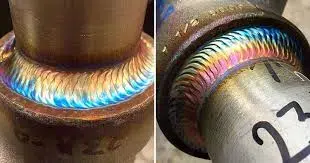
Welding
Welcome to [NDT Inspection Portal]’s welding group, a place for professionals to connect and discuss... View more
High-density polyethylene (HDPE) welding
-
High-density polyethylene (HDPE) welding
High-density polyethylene (HDPE) is a type of thermoplastic polymer that is widely used in a variety of applications due to its high strength, toughness, and chemical resistance. HDPE can be welded using several different methods, including:
-
Butt welding: This method involves aligning the edges of two pieces of HDPE and then applying heat and pressure to fuse them together. Butt welding is typically used to join HDPE pipes and fittings.
-
Socket welding: This method involves inserting the end of one HDPE pipe into a socket on another HDPE pipe and then applying heat and pressure to fuse them together. Socket welding is typically used to join smaller diameter HDPE pipes.
-
Extrusion welding: This method involves melting the edges of two pieces of HDPE and then extruding a bead of molten HDPE between them to create a weld. Extrusion welding is typically used to join HDPE sheets or plates.
-
Electrofusion welding: This method involves using an electric current to heat and fuse together two pieces of HDPE. Electrofusion welding is typically used to join HDPE pipes and fittings.
It is important to follow proper welding procedures when working with HDPE to ensure that the welds are strong and reliable. This includes using the appropriate equipment and following the manufacturer’s instructions for welding the material.
-
Sorry, there were no replies found.
Log in to reply.